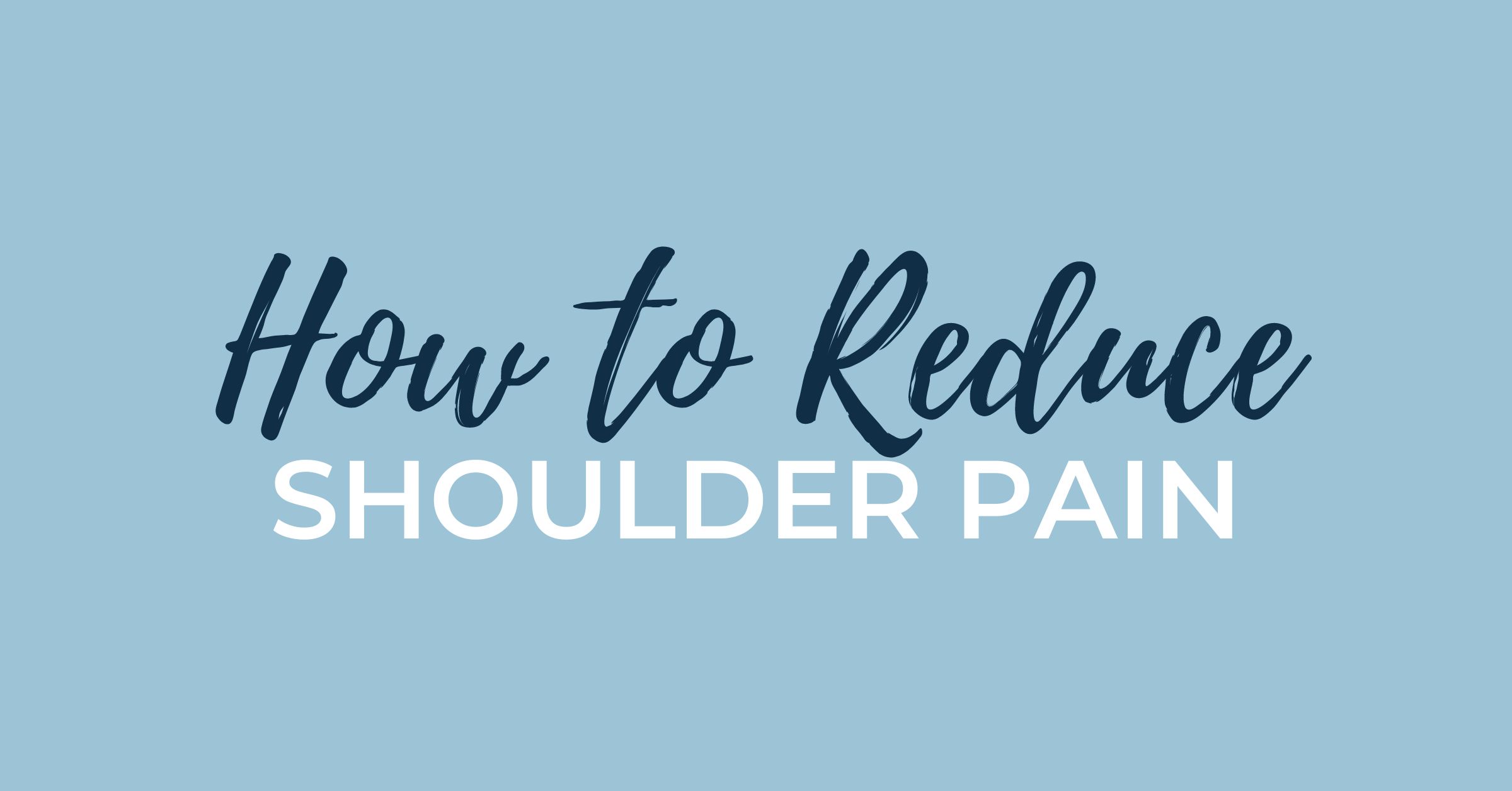June 29th, 2021
How to Reduce Shoulder Pain
If you’re experiencing shoulder pain, rest assured that you aren’t alone. In fact, about 70% of people will experience shoulder pain at some point in their life.
From a rotator cuff tear to impingement syndrome, shoulder pain can seriously get in the way of enjoying your life, participating in physical activities, and achieving your fitness goals.
So, why does shoulder pain happen? And how can exercise help you overcome that nagging pain that just won’t quit and finally help you get back to the activities you love? We’re about to find out.
The Shoulder: What Should You Know?
Did you know the shoulder is one of the most vulnerable joints in the human body? This is because it is a “ball-and-socket joint.” A strong and functional shoulder joint can be the most mobile joint in your body. The shoulder joint consists of various muscles, tendons, ligaments, bursa, and bones. We’ll look at the rotator cuff muscles – and how to strengthen them.
The rotator cuff consists of four main muscles which synergistically work together to keep the shoulder in its socket. They include the: supraspinatus, infraspinatus, subscapularis, and teres minor.
These muscles work together with the shoulder blades to keep your shoulder joint intact and stabilized through many different movements, including rotating the shoulder and moving the arm away from the body.
Now that we’ve got a better idea of what’s beneath the surface, let’s look into some common causes of shoulder pain.

What Causes Shoulder Pain?
The shoulder isn’t a simple joint – which means that pain in your shoulder can be due to several reasons. Shoulder pain is commonly caused by:
- Repetitive overhead movement – without sufficient rotator muscle rest.
- General wear and tear – which leads to obstructive scar tissue.
- And physical trauma – such as a fall.
Other than injury by strain or repetitive overuse and general neglect, pain in the shoulder can also be caused by impingement syndrome and referred pain.
Impingement Syndrome
Without properly preparing the body for activity, the shoulder can be subjected to impingement syndrome which happens when the rotator cuff tendons become irritated and inflamed. If untreated by a professional, inflammation will narrow the space available for the joint to move, leading to more pain, a restricted range of motion, and weakness.
Referred Pain
Sometimes, shoulder pain has nothing to do with the shoulder at all. Pain in the shoulder may stem from your neck or arm, which is called referred pain. Other, but less common, causes of shoulder pain include arthritis, bursitis, a pinched nerve, a frozen shoulder, and a dislocated shoulder.
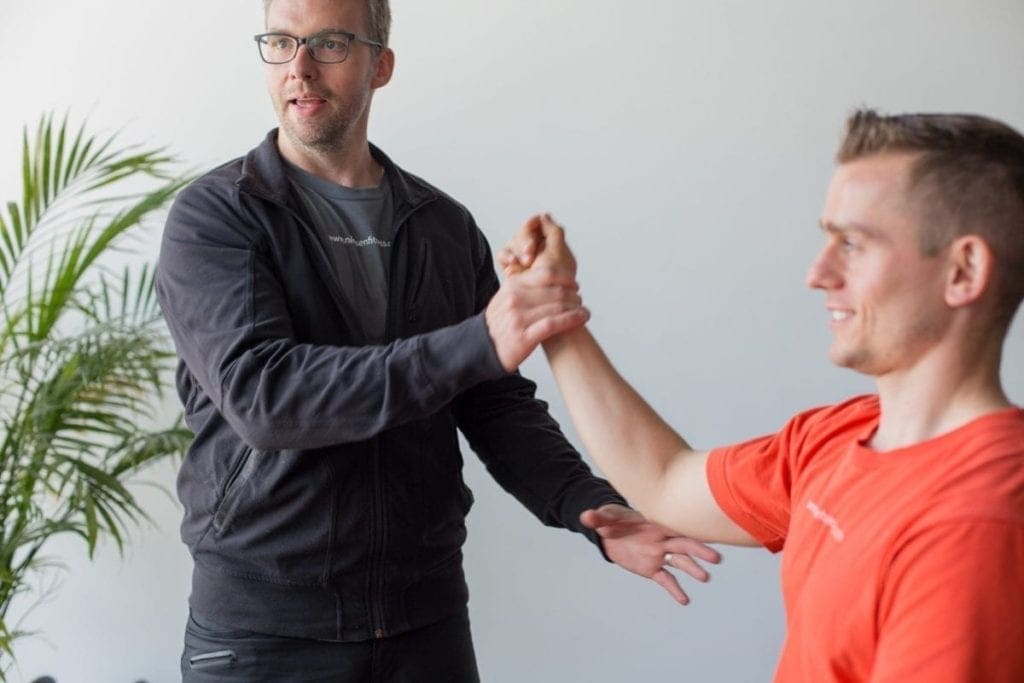
Rotator Cuff Exercise TIPS
Exercise can be your greatest resource to reduce and prevent shoulder pain. However, if you’re experiencing severe shoulder pain, consult your doctor or physiotherapist to get a diagnosis and avoid risking further injury.
For all exercises:
- Keep your shoulder blades down and back
- Don’t hold your breath
- Maintain control in all of your movements
- Never push yourself past the point of a mild (lactic acid) burn
- If in doubt, consult a professional
ways to exercise your rotator cuff
1. Banded External Rotation
This exercise is great for stabilizing the shoulder joint because it strengthens the tiny muscles at the back of the shoulder. This exercise can prevent and minimize the chance of pain or injury.
- Hold a resistance band at your side with your elbow at 90 degrees, and rotate your shoulder outwards (external rotation)
- Start with 15-20 reps and repeat two times per side.
You can do this exercise in many alternative ways, such as side lying with a soup can as resistance.

2. The Pendulum Exercise
If you suspect you have an impingement issue, this exercise will help you find the most relief.
- Bend forward at the hips and let one arm hang loosely like a pendulum, and use your other arm to support your body.
- Gently swing your arm in a circular motion, just like a pendulum. Repeat 10 times clockwise, then counterclockwise.
Repeat with the other arm, and do this twice daily.
This action will release lubrication in your shoulder joint and help to open space. After doing this you will feel noticeably freer and looser in your shoulder joint and surrounding muscles.

3. Static Contractions
Static contractions are among the safest form of exercise because they do not require dynamic movement. They can strengthen any one of your muscles, and produce minimal soreness. Static exercises will also give you the most control over how much resistance you apply to your muscles, and the resulting pressure you may feel in your joints.
Static Contraction Tips
- Locate a sturdy wall, and have a towel if you want additional comfort.
- With your arm at your side and your elbow at 90 degrees press your arm into the wall.
- Keep your neck and shoulders upright, spine straight and your knees slightly bent.
- You will need to engage your supportive muscles to remain in this stance as you push your arm into the wall.
- Feel each targeted muscle contracting as you push – keep your mind present and in the muscle. Push anywhere between 15-60% of your maximal effort.
- You will also feel several of your other muscles working hard to keep you in your upright stance – it’s not only your shoulder rotators we are targeting.
- Contract/hold for 5 seconds (overtime build your way up to 30 seconds), and repeat 3 times.
- Do not forget to breathe – and do not perform these exercises if you have high blood pressure.

Exercise 1: Static Shoulder Abduction
Rotator Muscle Targeted: Supraspinatus
Importance: When correctly strengthened and calibrated the supraspinatus muscle is the most effective muscle at keeping your joint in the socket, and it is responsible for lifting/abducting your arm up to the first 40 degrees. If it is weak or not working properly then other muscles poorly take over – which takes away from their effectiveness and often leads to premature wear and tear, pain and injury.
Execution: You’ll need to try to lift your arm while it is supported against the wall. You’ll likely feel your opposite side oblique muscle among many others working too.

Exercise 2: Static Shoulder Flexion
Rotator Muscle Targeted: Subscapularis
Importance: This muscle keeps the front of your ball and socket shoulder joint smoothly integrated into place. If not strong and flexible enough, it may strain and possibly tear when lifting or pushing. If it is damaged you’ll likely have a pinching feeling at the front and deep into your shoulder.
Execution: For this one, you’ll need to push and press away one of your arms from the wall. The trick here is to resist that from happening.
You’ll likely feel the muscles from the top of your shoulder blade – through to your ankles working together to resist the rotational force that you’ll be creating.
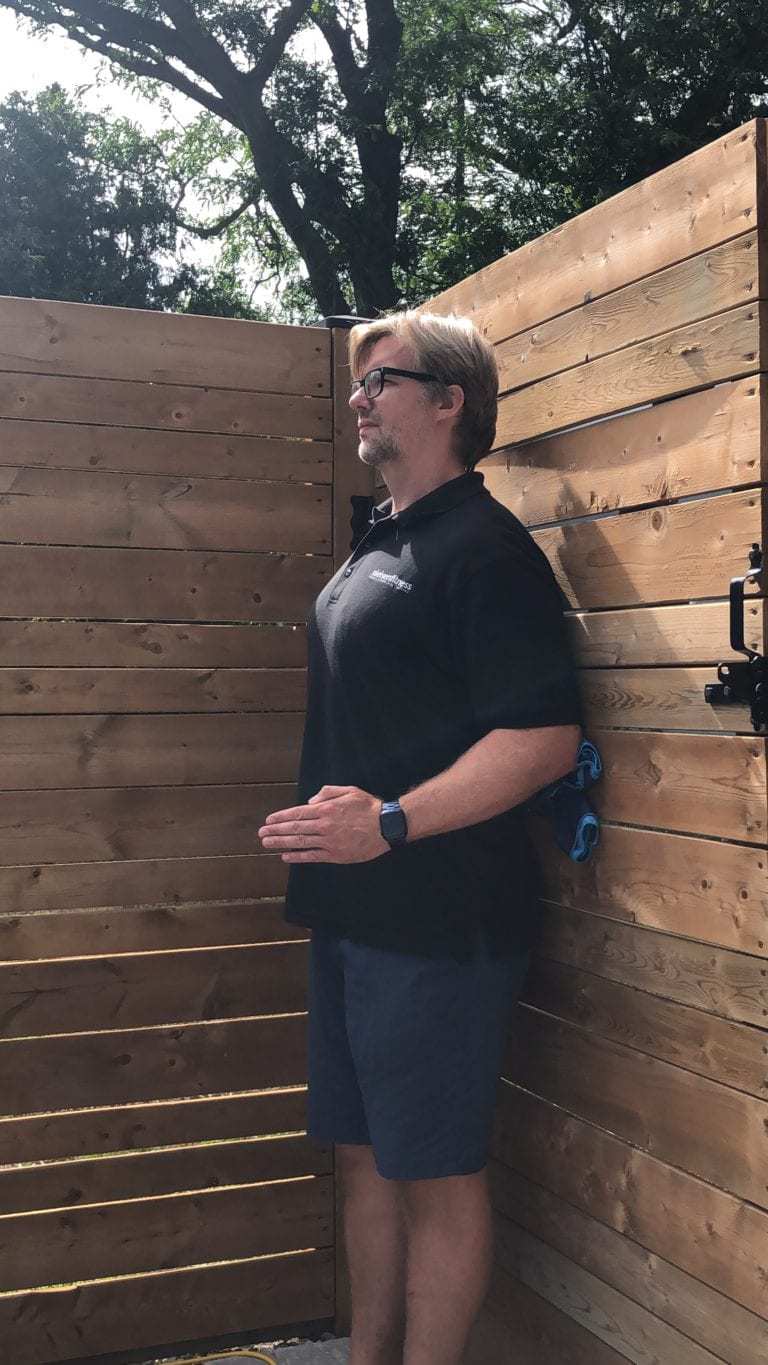
Exercise 3: Static Shoulder Extension
Rotator Muscles Targeted: Teres Minor and Infraspinatus
Importance: This is the “breaking muscle”. It’s the muscle that puts on the brakes when your arm goes through a throwing or reaching motion. And whether it is working properly or not, will make or break the future health of your shoulder.
Execution: Press your arm/elbow into the wall. You’ll need to work extra hard to keep your shoulder from lifting.
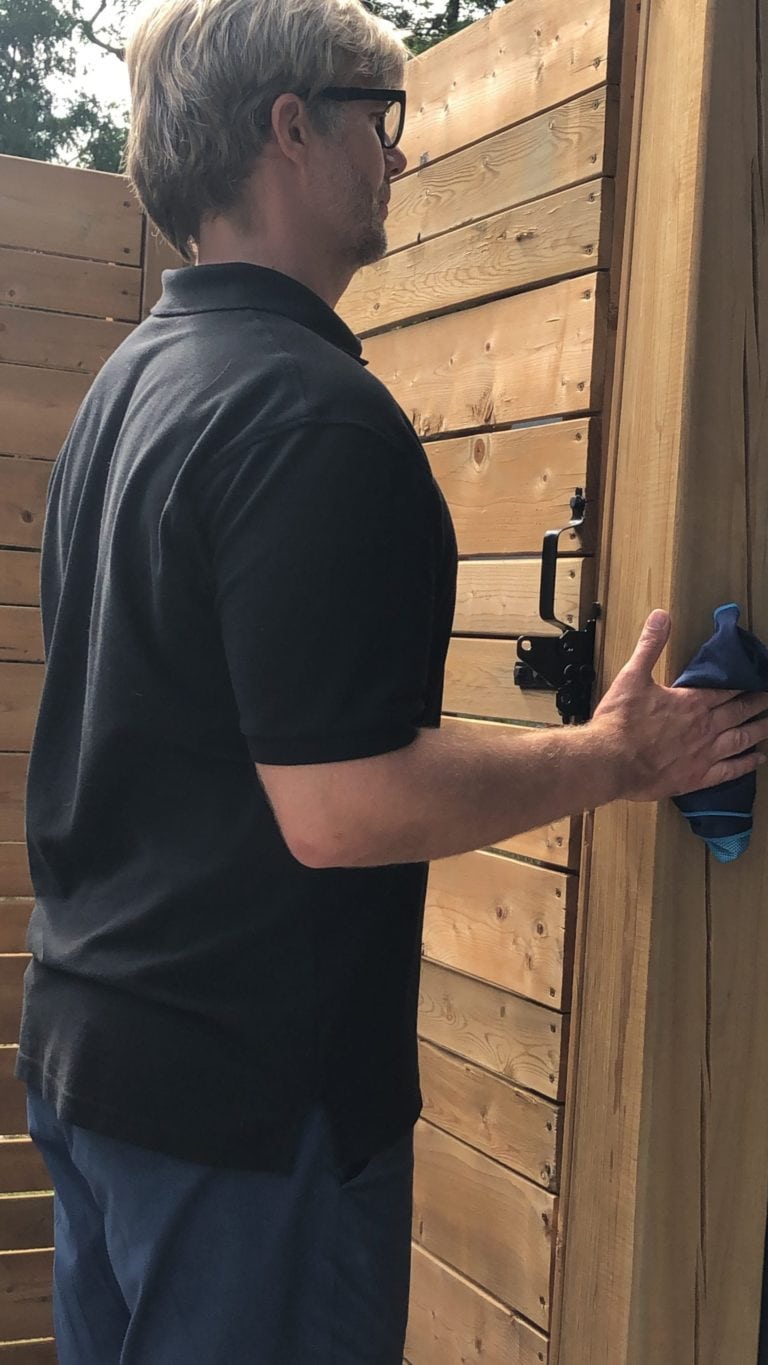
Exercise 4: Static Shoulder Internal Rotation
Rotator Muscles Targeted: Subscapularis and Supraspinatus
Importance: If you feel shoulder pain while reaching for your seatbelt, or want to reduce any tension or tightness in your neck, then having strong internal rotators is essential. When these muscles are synchronously working together, other joints and muscles will not be overly stressed. The result will be better posture and a smooth and strong functioning shoulder.
Execution: Press your palm into the inside of a doorframe or equivalent. Resist moving any part of your body, especially your neck.
BONUS: Static Stretching - The Chest Stretch
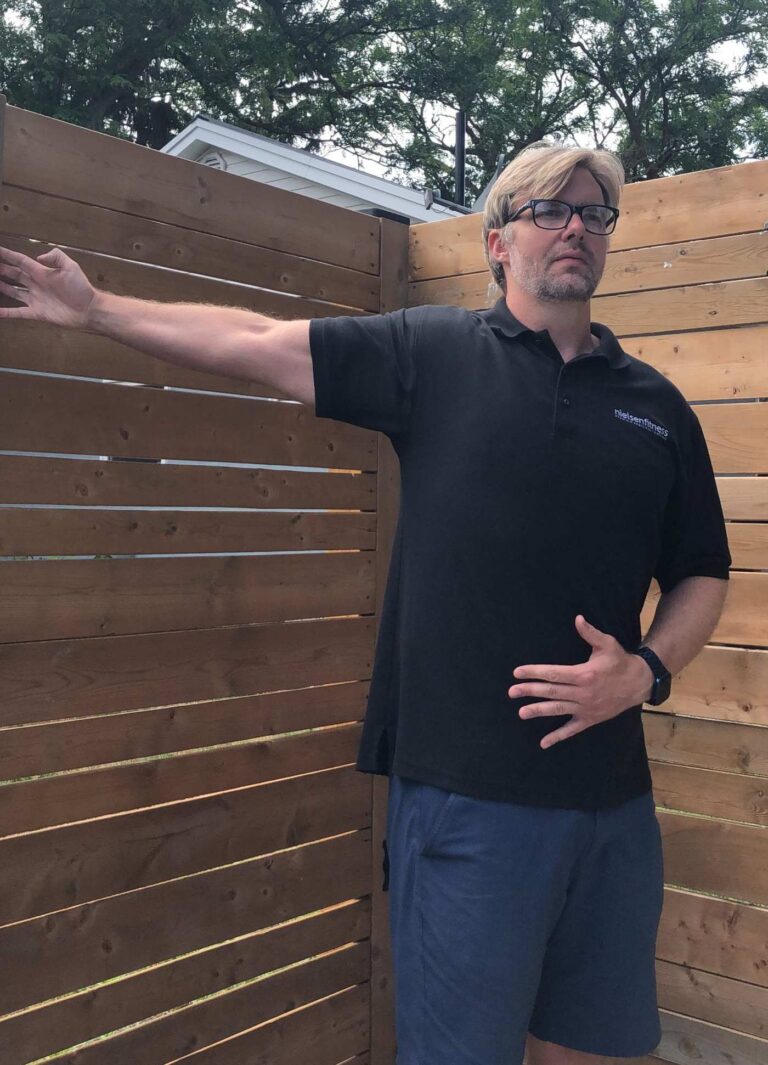
Stretching the chest muscles can relieve tension in the area(s) that may be pulling your shoulder joints forward. This tension can create various imbalances, causing pain and poor posture. Remember to only stretch after you have warmed up.
To perform the chest stretch, find a doorway or wall and place your arm slightly higher than the floor or ground. Keep a slight bend in your elbow, and use your fingertips or palm to support you.
Rotate your body slightly away from the wall, while keeping your core engaged and your hips firmly in place. If you do this right you will feel an effective stretch through your chest. Hold to a point of tension and not pain. You can hold this stretch for 15 seconds – two minutes, and repeat it twice daily.
A Customized Approach
If you want more guidance and a customized approach to your fitness goals, then apply for a complimentary fitness assessment and first workout.
In your assessment, we will gently assess your joint mobility, flexibility, and muscle strength (including your shoulders), and talk about ways to improve your overall function, longevity, and quality of life. We offer in-home training in Toronto as well as virtual and studio personal training, so you can choose what’s best for you. We look forward to hearing from you soon.
Updated on August 24, 2022.

